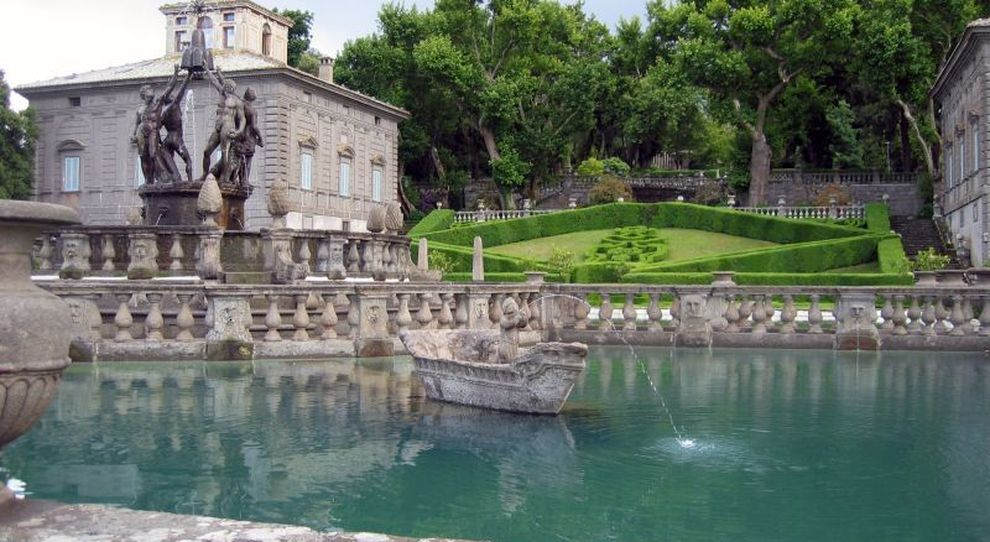Bagnaia is a fraction of Viterbo, located on the stretch of the Via Francigena that passes between the Cimini mountains, famous for its mannerist garden “Villa Lante”.
The first specific historical mention of this center dates back to the year 963, when the village was known as Bangaria. In the thirteenth century the territory of Bagnaia became the object of a donation assigned by the pope to the bishop of nearby Viterbo; however, no bishop’s residence was built there until the 16th century.
During the Middle Ages the village already presents some interesting architectures, but the ones dating back to the Renaissance will be more important; after the construction of Villa Lante, Bagnaia greatly increased its popularity as a resting place.
In 1576 the Sienese architect Tommaso Ghinucci reorganized the town plan of the town, in the process of becoming a small city: these adjustments are particularly visible near Piazza XX Settembre, inspired by Piazza del Popolo in Rome. The facades of the buildings in the square are decorated with papal and cardinal crests.
In 1928 it lost the title of municipality in favor of Viterbo and became a fraction.
From the square, in the upper part of the Lemax village, it is possible to access Villa Lante, whose construction began around 1566 on commission from Cardinal Gianfrancesco Gambara.
Bagnaia is also famous throughout the province for the Sacred Fire of Sant’Antonio: a pyre over 8 meters high for about 30 meters in circumference that is lit every year on January 16th.
More information
The village of Bagnaia is a fraction of the city of Viterbo, just over 5 kilometers away. The first evidence of this place dates back to the 10th century, at that time the area was called Bangaria. Already at the beginning of the bridge that leads to the central square of the town, you can see the clock tower which is part of the ancient medieval fortified castle, belonging to the 12th century and overlooking the Pierina Valley. Today called Palazzo della Loggia, it underwent several alterations dating back to the sixteenth century.







